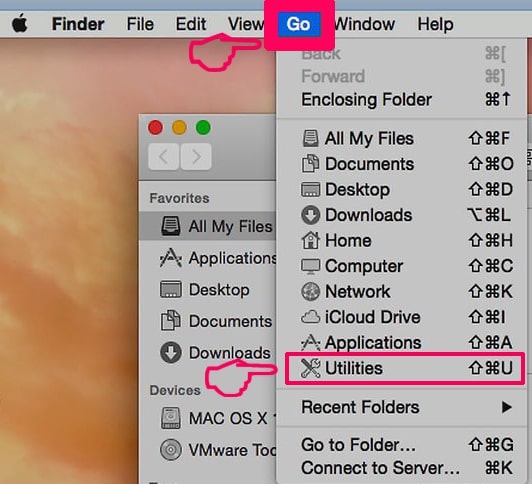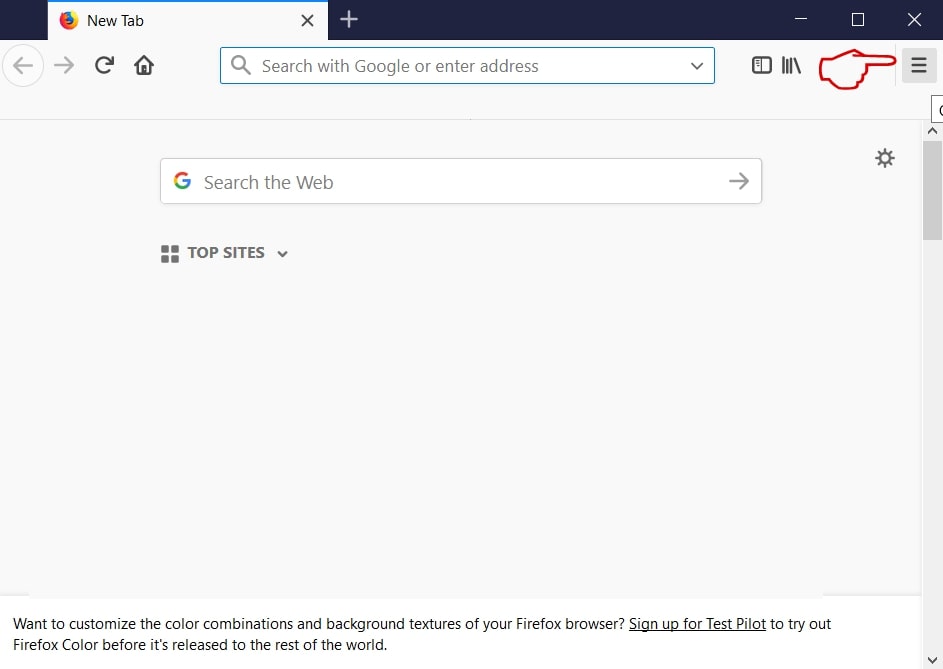What Is CommonRemote?
CommonRemote is an adware program designed to target macOS users. The program belongs to the AdLoad malware family, and as such, it should be removed immediately. These applications usually mimic legitimate software products or browser extensions. You may have downloaded CommonRemote because you thought it was a legitimate program.
Moreover, some AdLoad variants could be signed with an Apple developer certificate, making it very difficult to recognize CommonRemote as a malicious app. AdLoad has been around for several years, and by the looks of it, new variants such as CommonRemote will continue to appear. That is why your Mac needs anti-malware protection.

CommonRemote Details
| Name | CommonRemote also known as Trojan.Adload |
| Type | Adware / Potentially Unwanted Application / Mac Virus |
| Removal Time | Less than 15 minutes |
| Removal Tool |
See If Your System Has Been Affected by malware
Malware Removal Tool
Malware Removal Tool
|
CommonRemote Installation
CommonRemote is most likely distributed via bundled software installers and fake software updates (e.g. Adobe Flash Player is out of date). You may have downloaded a free program from the web which was bundled with CommonRemote. Such additional, hidden downloads are often the culprit for the installation of potentially unwanted programs and adware.
These applications usually sneak into your Mac through third-party websites, not the official Apple App Store. Marketed as useful, they may not be as legitimate as they seem. Another distribution method used by AdLoad is through additional installations alongside recent setups. In the installer of a free app, an AdLoad variant such as CommonRemote may be promoted as an “optional deal” or a “free added.”
While the application may appear beneficial at first, it can tamper with your Mac’s permissions and alter browser settings for Google Chrome, Safari, Firefox, or Opera. These changes are done so that AdLoad can display various types of ads, including pop-ups, browser redirect ads, banners, and push notifications.
What Is the Purpose of CommonRemote?
In most cases, the end goal of programs such as OptimalValue is data collection and hijacking browser sessions by imposing ads on users.
Such programs may also open a backdoor which might be used to drop additional adware or even malware. To sum it up, the program can be used in various malicious scenarios, depending on the hackers’ current agenda and campaign.
Is CommonRemote Dangerous?
The presence of CommonRemote significantly impairs the browsing experience and increases the risk of further infections. Adware applications deliver advertisements (e.g., coupons, banners, pop-ups) that can redirect to malicious websites or install other unwanted apps through scripts.
Clicking on these ads can trigger the installation of infectious apps. Moreover, these adware apps collect user information like IP addresses, visited website URLs, search queries, and other details, which are then shared with third parties, potentially leading to privacy issues or identity theft.
How to Protect My Mac from CommonRemote?
It’s easy to prevent the installation of such dangerous programs by following these tips:
- Don’t download programs from Internet ads, pop-ups, torrent trackers, file sharing sites and other unreliable sources.
- Opt-out of the setting hidden in the “Custom” or “Advanced” sections when you’re installing a program. You can deselect most PUPs from there.
- Avoid installing programs you don’t need.
- Keep an eye out for any excessive or unusual Internet advertising. These ads can be brought on by PUPs and adware attached to your browser.
- Read the terms and conditions of use when you install any programs.
- Check your installed software regularly and uninstall any applications you do not want or need.
- Install an anti-malware program that also has the ability to detect and remove potentially unwanted programs.
Remove CommonRemote from Your Mac
In order to remove the CommonRemote adware and all its malicious files from your Mac, you should complete all the steps listed in the removal that follows. It presents both manual and automatic removal instructions that combined could help you to secure your device and keep it safe from future attacks. Considering the malicious nature of the threat, the utilization of an anti-malware program is highly recommended.
Steps to Prepare Before Removal:
Before starting to follow the steps below, be advised that you should first do the following preparations:
- Backup your files in case the worst happens.
- Make sure to have a device with these instructions on standy.
- Arm yourself with patience.
- 1. Scan for Mac Malware
- 2. Uninstall Risky Apps
- 3. Clean Your Browsers
Step 1: Scan for and remove CommonRemote files from your Mac
When you are facing problems on your Mac as a result of unwanted scripts and programs such as CommonRemote, the recommended way of eliminating the threat is by using an anti-malware program. SpyHunter for Mac offers advanced security features along with other modules that will improve your Mac’s security and protect it in the future.

Quick and Easy Mac Malware Video Removal Guide
Bonus Step: How to Make Your Mac Run Faster?
Mac machines maintain probably the fastest operating system out there. Still, Macs do become slow and sluggish sometimes. The video guide below examines all of the possible problems that may lead to your Mac being slower than usual as well as all of the steps that can help you to speed up your Mac.
Step 2: Uninstall CommonRemote and remove related files and objects
1. Hit the ⇧+⌘+U keys to open Utilities. Another way is to click on “Go” and then click “Utilities”, like the image below shows:

2. Find Activity Monitor and double-click it:

3. In the Activity Monitor look for any suspicious processes, belonging or related to CommonRemote:


4. Click on the "Go" button again, but this time select Applications. Another way is with the ⇧+⌘+A buttons.
5. In the Applications menu, look for any suspicious app or an app with a name, similar or identical to CommonRemote. If you find it, right-click on the app and select “Move to Trash”.

6. Select Accounts, after which click on the Login Items preference. Your Mac will then show you a list of items that start automatically when you log in. Look for any suspicious apps identical or similar to CommonRemote. Check the app you want to stop from running automatically and then select on the Minus (“-“) icon to hide it.
7. Remove any leftover files that might be related to this threat manually by following the sub-steps below:
- Go to Finder.
- In the search bar type the name of the app that you want to remove.
- Above the search bar change the two drop down menus to “System Files” and “Are Included” so that you can see all of the files associated with the application you want to remove. Bear in mind that some of the files may not be related to the app so be very careful which files you delete.
- If all of the files are related, hold the ⌘+A buttons to select them and then drive them to “Trash”.
In case you cannot remove CommonRemote via Step 1 above:
In case you cannot find the virus files and objects in your Applications or other places we have shown above, you can manually look for them in the Libraries of your Mac. But before doing this, please read the disclaimer below:
1. Click on "Go" and Then "Go to Folder" as shown underneath:

2. Type in "/Library/LauchAgents/" and click Ok:

3. Delete all of the virus files that have similar or the same name as CommonRemote. If you believe there is no such file, do not delete anything.

You can repeat the same procedure with the following other Library directories:
→ ~/Library/LaunchAgents
/Library/LaunchDaemons
Tip: ~ is there on purpose, because it leads to more LaunchAgents.
Step 3: Remove CommonRemote – related extensions from Safari / Chrome / Firefox









CommonRemote-FAQ
What is CommonRemote on your Mac?
The CommonRemote threat is probably a potentially unwanted app. There is also a chance it could be related to Mac malware. If so, such apps tend to slow your Mac down significantly and display advertisements. They could also use cookies and other trackers to obtain browsing information from the installed web browsers on your Mac.
Can Macs Get Viruses?
Yes. As much as any other device, Apple computers do get malware. Apple devices may not be a frequent target by malware authors, but rest assured that almost all of the Apple devices can become infected with a threat.
What Types of Mac Threats Are There?
According to most malware researchers and cyber-security experts, the types of threats that can currently infect your Mac can be rogue antivirus programs, adware or hijackers (PUPs), Trojan horses, ransomware and crypto-miner malware.
What To Do If I Have a Mac Virus, Like CommonRemote?
Do not panic! You can easily get rid of most Mac threats by firstly isolating them and then removing them. One recommended way to do that is by using a reputable malware removal software that can take care of the removal automatically for you.
There are many Mac anti-malware apps out there that you can choose from. SpyHunter for Mac is one of the reccomended Mac anti-malware apps, that can scan for free and detect any viruses. This saves time for manual removal that you would otherwise have to do.
How to Secure My Data from CommonRemote?
With few simple actions. First and foremost, it is imperative that you follow these steps:
Step 1: Find a safe computer and connect it to another network, not the one that your Mac was infected in.
Step 2: Change all of your passwords, starting from your e-mail passwords.
Step 3: Enable two-factor authentication for protection of your important accounts.
Step 4: Call your bank to change your credit card details (secret code, etc.) if you have saved your credit card for online shopping or have done online activiites with your card.
Step 5: Make sure to call your ISP (Internet provider or carrier) and ask them to change your IP address.
Step 6: Change your Wi-Fi password.
Step 7: (Optional): Make sure to scan all of the devices connected to your network for viruses and repeat these steps for them if they are affected.
Step 8: Install anti-malware software with real-time protection on every device you have.
Step 9: Try not to download software from sites you know nothing about and stay away from low-reputation websites in general.
If you follow these reccomendations, your network and Apple devices will become significantly more safe against any threats or information invasive software and be virus free and protected in the future too.
More tips you can find on our MacOS Virus section, where you can also ask any questions and comment about your Mac problems.
About the CommonRemote Research
The content we publish on SensorsTechForum.com, this CommonRemote how-to removal guide included, is the outcome of extensive research, hard work and our team’s devotion to help you remove the specific macOS issue.
How did we conduct the research on CommonRemote?
Please note that our research is based on an independent investigation. We are in contact with independent security researchers, thanks to which we receive daily updates on the latest malware definitions, including the various types of Mac threats, especially adware and potentially unwanted apps (PUAs).
Furthermore, the research behind the CommonRemote threat is backed with VirusTotal.
To better understand the threat posed by Mac malware, please refer to the following articles which provide knowledgeable details.


